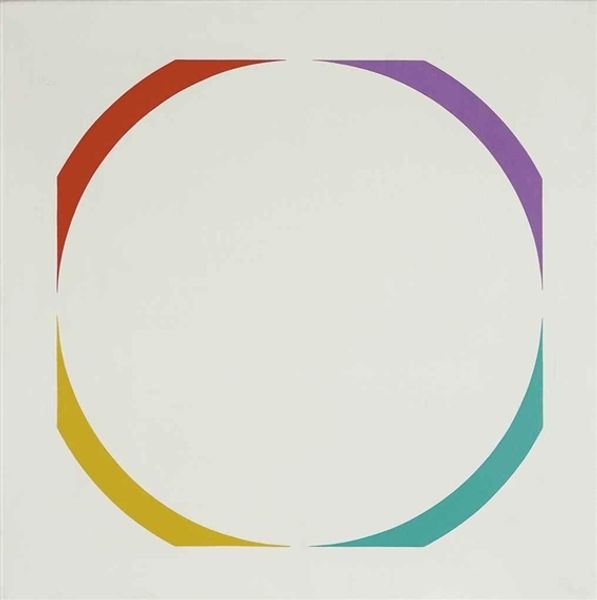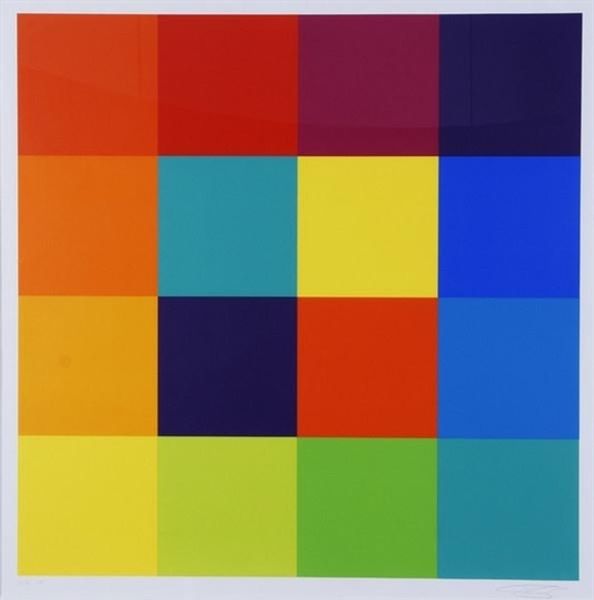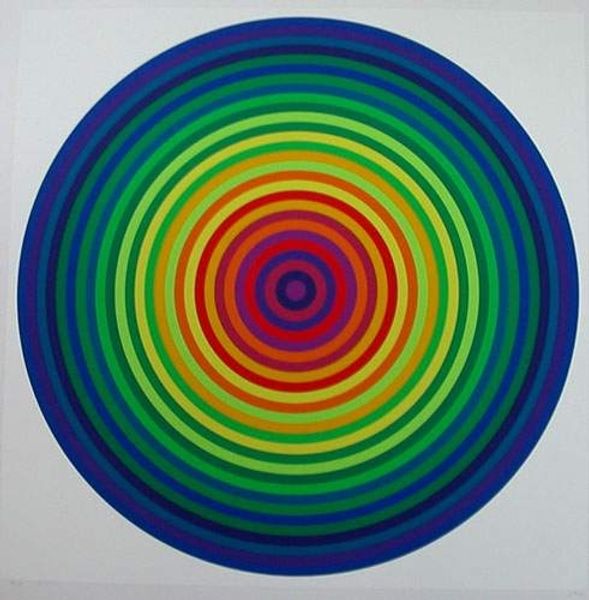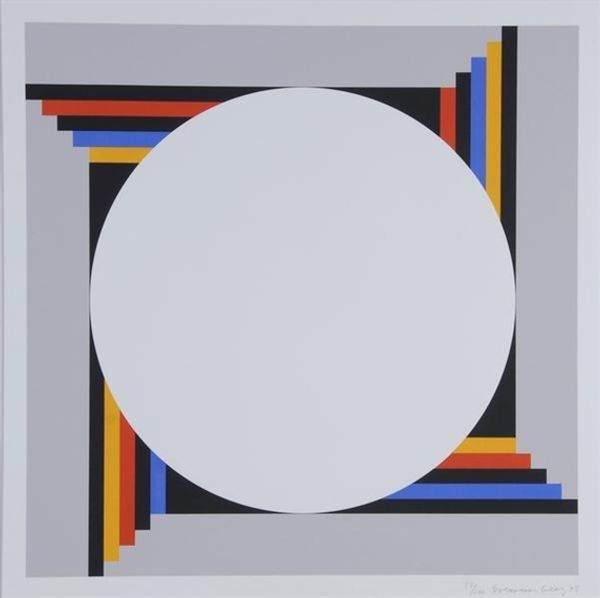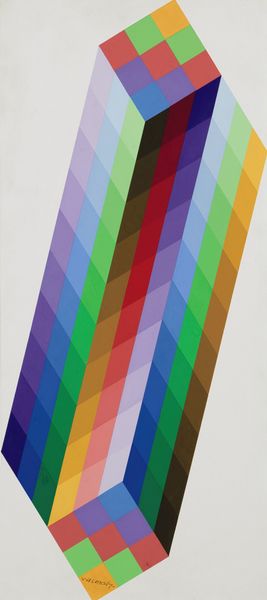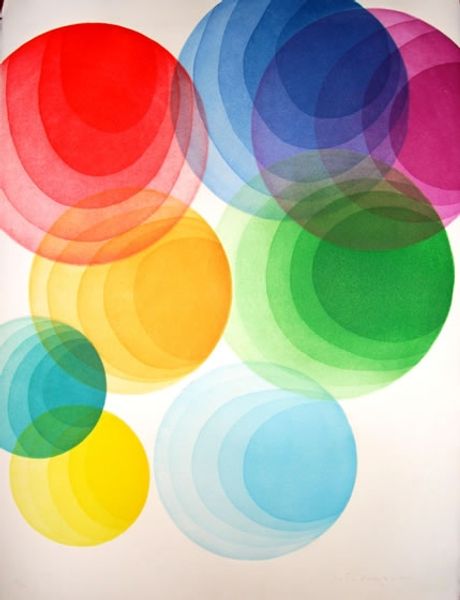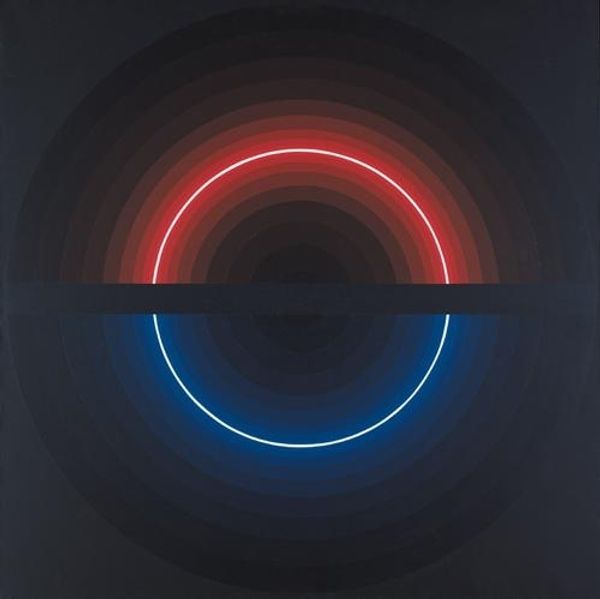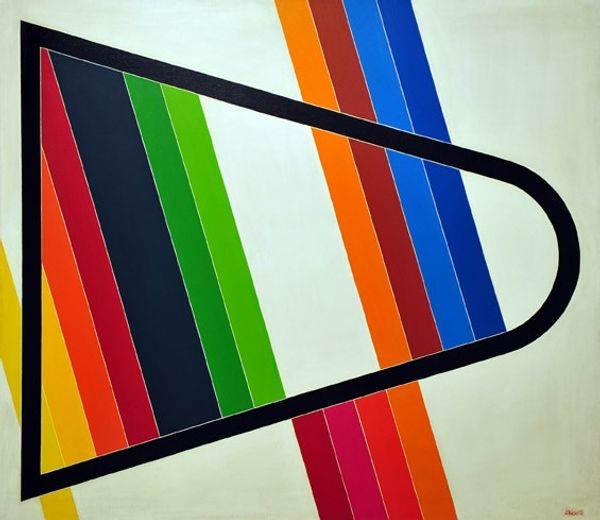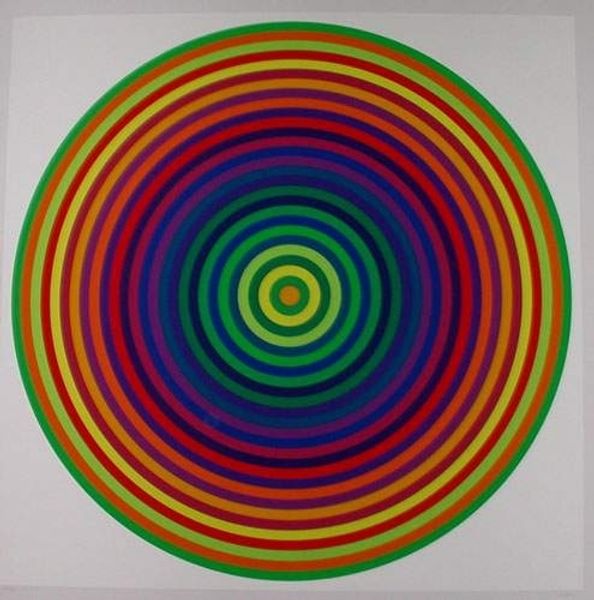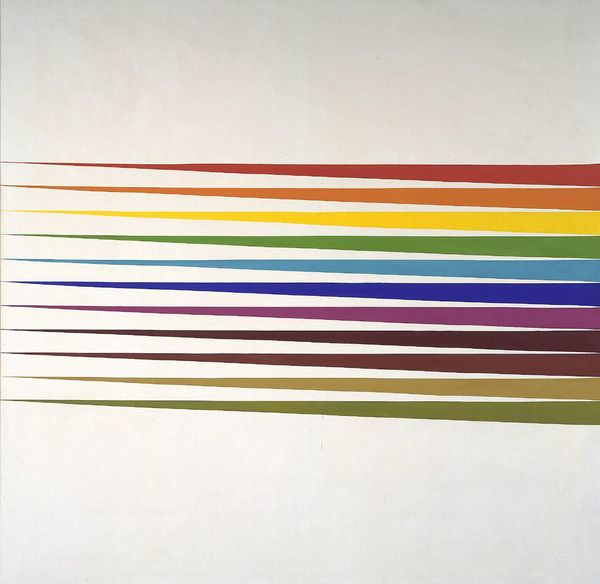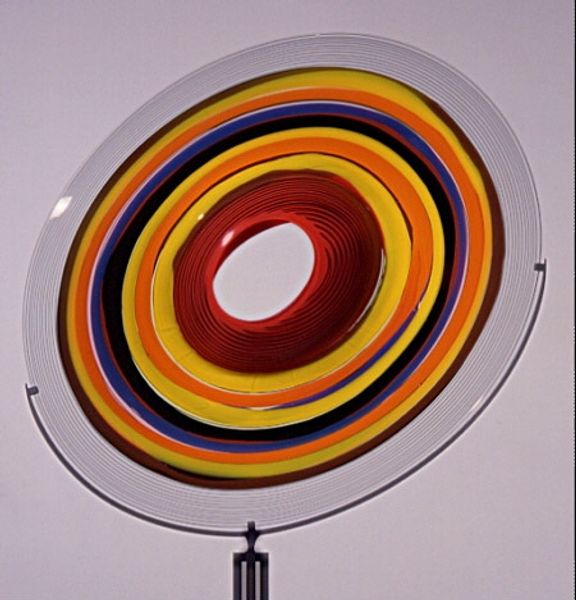
Copyright: Horacio Garcia-Rossi,Fair Use
Curator: Here we have Horacio Garcia-Rossi's "Couleur electrique lumiere" created in 2000. Editor: My first impression is that it’s remarkably calm, despite the vibrant colours. The geometric simplicity, the perfect circle, it's quite mesmerizing. Curator: Garcia-Rossi was deeply interested in the intersection of light and colour, and that resonates strongly with the socio-political context of his time, specifically around issues of representation and visibility. He created several artworks dealing with electricity and colours and light in reference to modern societies. Editor: Yes, the piece presents a circle comprised of coloured segments, set against a grey background. I'm immediately struck by the contrast. The colours almost vibrate, especially against that solid backdrop. Curator: He employed acrylic paint with an incredible level of precision, achieving a remarkable optical effect of the light from the colors, that also alludes to inclusivity and embracing differences within a whole. Editor: There is a real balance achieved here, both with the distribution of colour around the perimeter and also the way in which the chromatic density relates to the neutral field that surrounds the geometry. Curator: Definitely, that balance and tension were intentional. Garcia-Rossi was exploring themes of inclusion but it reflected social issues and cultural integration within larger urban landscapes. He questions what might happen when individual parts unite within social, communal settings. Editor: That internal void almost calls to me, tempting a phenomenological response and speculation on how one sees within and beyond the edges and surfaces in painting. It also has that perfect mathematical and symbolical dimension, referencing perfection and infiniteness, in a purely optical dimension, but always mediated by materiality. Curator: Exactly. "Couleur electrique lumiere" is so successful, not because it simplifies the complex but instead, it amplifies it. Editor: A true testament to the power of observation in modern art. Curator: Absolutely, it is.
Comments
No comments
Be the first to comment and join the conversation on the ultimate creative platform.
